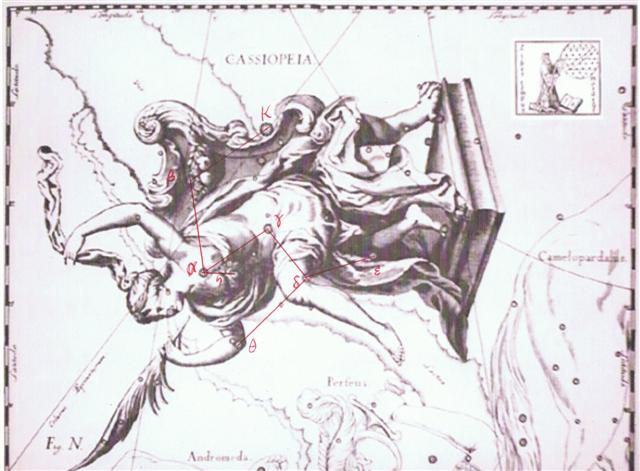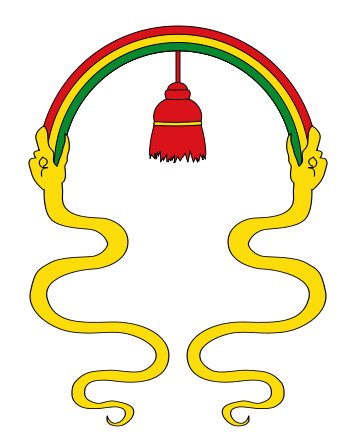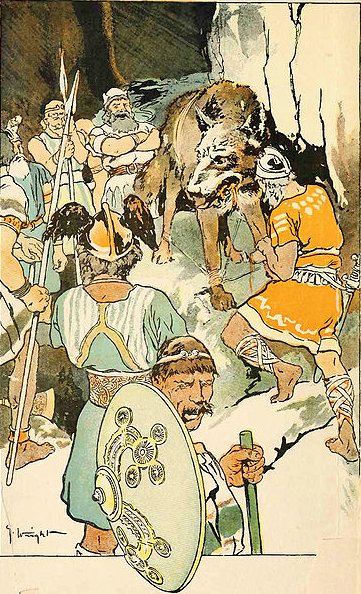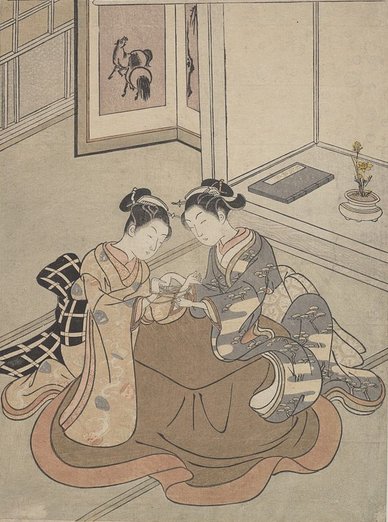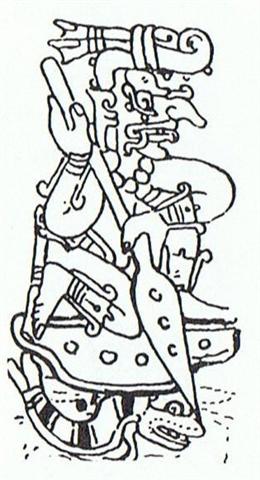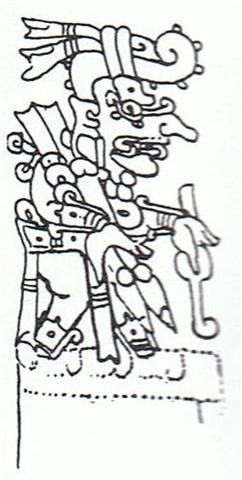105. Thus I suggest that *8 at Schedir should be primarily read as a place defined in the night sky during the Golden Era of the Bull, and from there the current corresponding place in the Sun calendar should become evident. And because on Easter Island the seasons of winter and summer were reversed, the figure pointing up with an empty hand in Gb3-19 could correspond to September 27 when high up the father of Andromeda, King Cepheus (Alderamin, α), culminated at 21h: 
We have now put ourselves in a position for studying April 1 (91). In Sweden there is a custom of trying to cheat everyone when reaching the date of April 1. When successful this rhyme is chanted: April, April din dumma sill [herring]! Jag kan lura dig vart jag vill! Stupid, stupid Fish! I can trick you to go to wherever I wish! This 'herring' could allude to the fishing in winter, when the agricultural fields were bare and unfruitful,
i.e. to the Winter Maid: ... Hamiora Pio once spoke as follows to the writer: 'Friend! Let me tell of the offspring of Tangaroa-akiukiu, whose two daughters were Hine-raumati (the Summer Maid - personified form of summer) and Hine-takurua (the Winter Maid - personification of winter), both of whom where taken to wife by the sun ... Now, these women had different homes. Hine-takurua lived with her elder Tangaroa (a sea being - origin and personified form of fish). Her labours were connected with Tangaroa - that is, with fish. Hine-raumati dwelt on land, where she cultivated food products, and attended to the taking of game and forest products, all such things connected with Tane ... ... In later research it was postulated that the [Phoenician] alphabet is actually two complete lists, the first dealing with land agriculture and activity, and the second dealing with water, sea and fishing. The first half beginning with Alef - an ox, and ending with Lamed - a whip. The second list begins with Mem - water, and continues with Nun - fish, Samek - fish bones, Ayin - a water spring, Peh - the mouth of a well, Tsadi - to fish, Kof, Resh and Shin are the hook hole, hook head and hook teeth, known to exist from prehistoric times, and the Tav is the mark used to count the fish caught ...
Presumably the Chinese station suggesting Wolf was defined from the pair of stars ν and η in Andromeda, at *11.0 (→ Sun) respectively at *11.4 (→ Bharani).
The Breast functions as a source of nourishment for the very young and somewhat later they have to get up on their Legs in order to move around in order to work for food on Terra Firma. ... During his descent the ancestor still possessed the quality of a water spirit, and his body, though preserving its human appearance, owing to its being that of a regenerated man, was equipped with four flexible limbs like serpents after the pattern of the arms of the Great Nummo. The ground was rapidly approaching. The ancestor was still standing, his arms in front of him and the hammer and anvil hanging across his limbs. The shock of his final impact on the earth when he came to the end of the rainbow, scattered in a cloud of dust the animals, vegetables and men disposed on the steps. When calm was restored, the smith was still on the roof, standing erect facing towards the north, his tools still in the same position. But in the shock of landing the hammer and the anvil had broken his arms and legs at the level of elbows and knees, which he did not have before. He thus acquired the joints proper to the new human form, which was to spread over the earth and to devote itself to toil ... ... There is a couple residing in one place named Kui and Fakataka. After the couple stay together for a while Fakataka is pregnant.
So they go away because they wish to go to another place - they go. The canoe goes and goes, the wind roars, the sea churns, the canoe sinks. Kui expires while Fakataka swims. Fakataka swims and swims, reaching another land. Taki tua, perineum. Vaha takitua, perineum. Taki. Dieffenbach, in his 'Travels in New Zealand', mentions that a title or appellation of the chiefs there was 'Taki o te Wenua', and explains it to mean 'the root of the land'. As the New Zealanders also came from the Samoan group, it seems as if what once was a national appellation, in course of time became the title of a chief. If Diffenbach's interpretation of the title is correct, it corresponds to the Hawiian Kumu-honua, the name of the first man. The same author also mentions, p. 67, a place where chiefs go after death, and says it is called Taki-wana ... when a chief dies he first goes to Taki-wana, where his left eye remains and becomes a star. Then he goes to Reinga and further. Spirits sometimes leave the nether world and come back on earth and communicate with the living ... Reinga was a place near the North ... She goes there and stays on the upraised reef in the freshwater pools on the reef, and there delivers her child, a boy child. She gives him the name Taetagaloa. When the baby is born a golden plover flies over and alights upon the reef. (Kua fanau lā te pepe kae lele mai te tuli oi tū mai i te papa).
And so the woman thus names various parts of the child beginning with the name 'the plover' (tuli): neck (tuliulu), elbow (tulilima), knee (tulivae) ...
|
||||||||||||||||||||||||||||||||||||||||||||||||||||||||||||||||||||||||||||||||||||||||||||||||||||||||||||||||||||||||||||||||||||||||||||||||||||||||||||||||||||||||||



